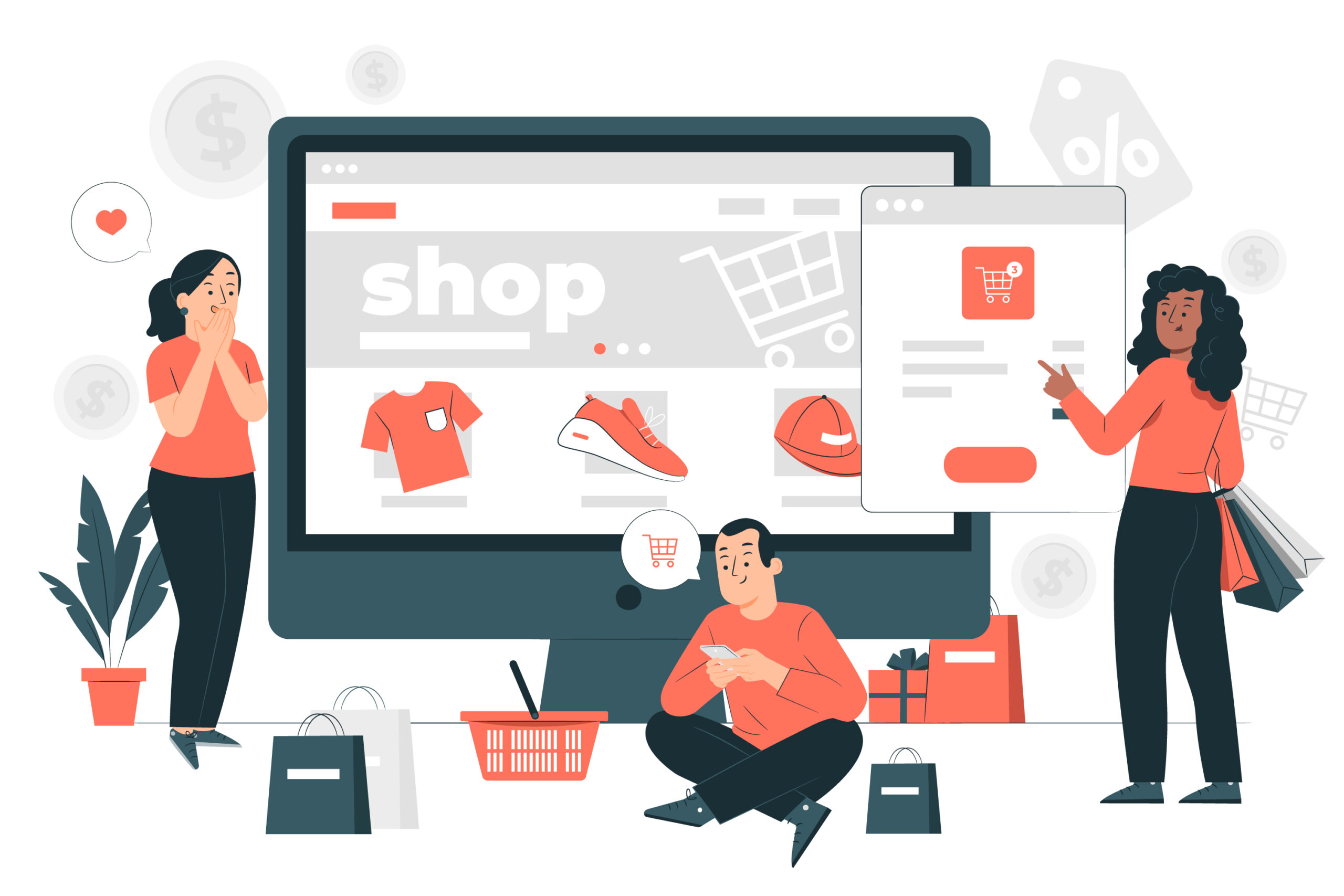In the era where online shopping has become a norm, ecommerce development is a critical element in the equation for success. The ecommerce industry has been on an upward trajectory and this growth will continue for the foreseeable future as well.
In this post, we will give you a step-by-step guide to help you get a start on your online business on the right foot.
What is Ecommerce Development?
In the world of online shopping, ecommerce connects businesses to consumers, encapsulating the strategies, technologies, and practices that transforms businesses and their concepts into a virtual stores. Each and every element, from website design to user experience, is tailored to facilitate a seamless product discovery, evaluation, and purchase that ensure that the customers find what they are looking and enjoy the journey from browse to buy as well.
- Identify your target market.
- Choose the right platform.
- Determine product categories.
- Define your branding.
- Add descriptions and photos.
- Plan your content strategy.
- Test your website.
- Use data to update your site.
1.Identify your target market.
The first key step to an effective ecommerce solution is identifying your target audience, as your website is the most critical channel for your business and that’s where all your marketing efforts point to, and conversions take place. To create a website that appeals to your customers unique needs and preferences, understanding them first is important.
2.Choose the right platform
Choosing the right ecommerce platform is one of the most critical decisions every ecommerce business owner will have to make. The platform you choose determines how successful your business will be as it will affect how you manage your website and promote your online store. It also impacts the user experience.
3.Determine product categories
Ecommerce product categorization affects the shopping experience. That’s why clear and intuitive product categories make it easier for customers to find what they want. Also, they enhance your store’s internal search and overall SEO. Understanding your products and developing a logical way to present them, categorizing and presenting your products to meet the shoppers expectations are important. Product categorization usually starts with the broader categories and then go down to more specific sub-categories.
4.Define your branding
It is important to develop a unique branding style to ensure your online store stands out from your competitors. Your brand identity or personality and your niche and products can also push you towards a particular color scheme. You also want to find the appropriate logo and brand voice. It is important to ensure the brand logo design blends perfectly with your color scheme.
5.Add descriptions and photos
Unfortunately, online shopping doesn’t give customers many ways to inspect products as they can’t touch or smell themso they can only view it. One easy way to achieve this is by using high-quality images. Don’t neglect the product description, as the product descriptions should help shoppers see how the product satisfies their needs or interests. Focus on product benefits primarily and not features.
6.Plan your content strategy
A content marketing strategy is essential during development, as it will help you drive leads to your ecommerce website where they’ll hopefully convert into customers. Creating a strategy beforehand will help you design a website that aligns with your content marketing efforts.
7.Test your website
Always test your ecommerce site extensively before making it live, because the last thing you want is to launch your business with a broken website. This could also damage your brand reputation, making it harder to pull customers in the future. Start by testing technical issues like site speed, responsiveness, and browser compatibility and your page load times with a tool like Google’s Page Speed Insights, and use the recommendations to improve the performance. Your website should also be mobile-friendly. And ensure your product images load correctly, the text is easy to read, and the buttons are large enough to easily click. Check the site across multiple browsers to ensure it’s working perfectly.
8.Use data to update your site
Post-launch, you should optimize your store to maximize conversions. Start by A/B testing variables such as your value proposition, CTAs, page layout. Monitoring your website’s performance on Google Analytics is very essential as that will help you track the number of site visitors, traffic sources, bounce rate, page views, average session duration, and so on. You can then use the data points to make informed decisions.
The ecommerce industry might be getting more competitive by the day, but are ways to rise through the ranks and that starts by getting your ecommerce site right by choosing the proper ecommerce development company. Identify your target audience, choose the right ecommerce platform, create your product categories, proceed to define your branding style and add compelling product descriptions and photos plan your content strategy and test the site, fix any issues identified before your store goes live and monitor your online store’s metrics to adjust your website and marketing strategies accordingly.



